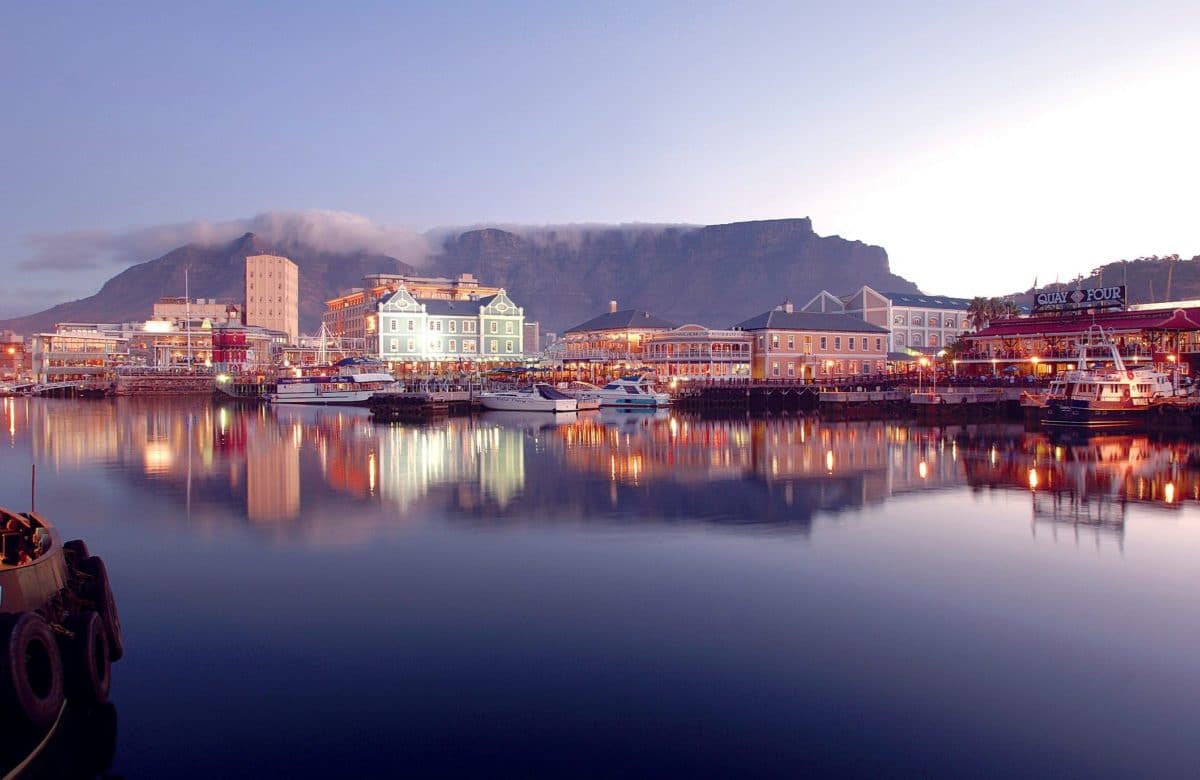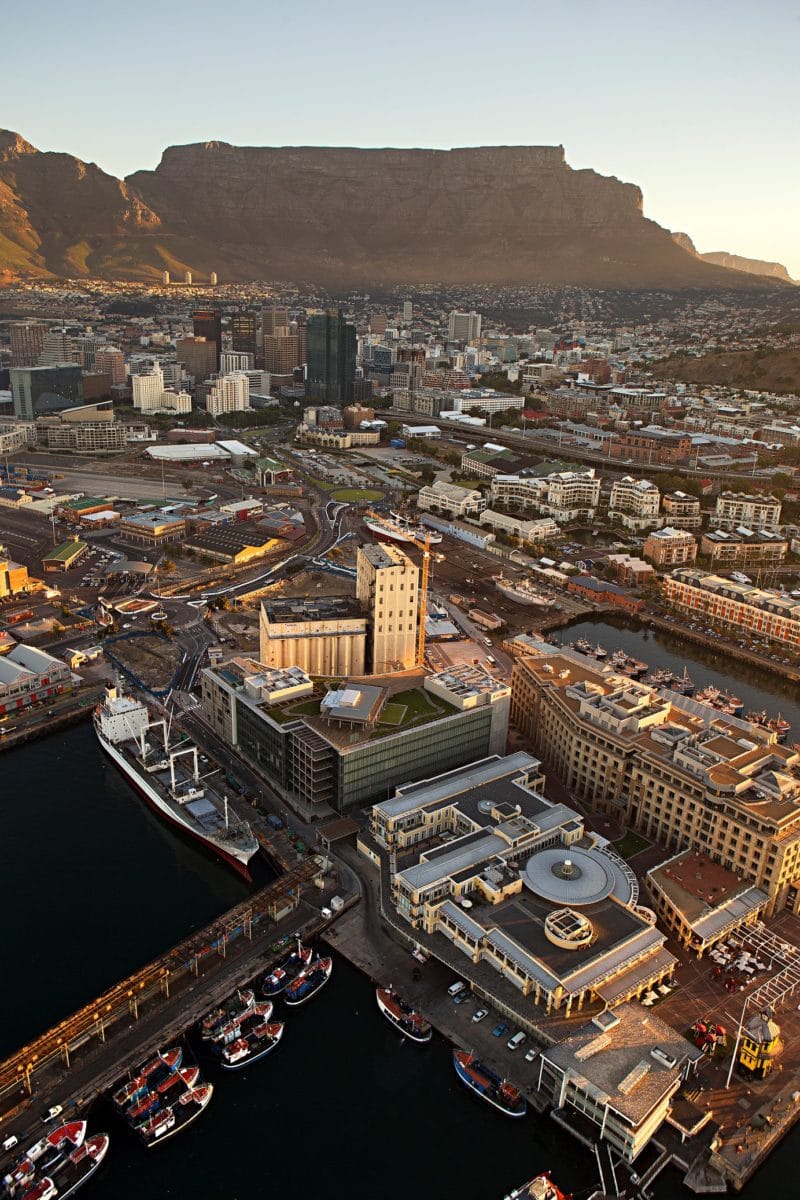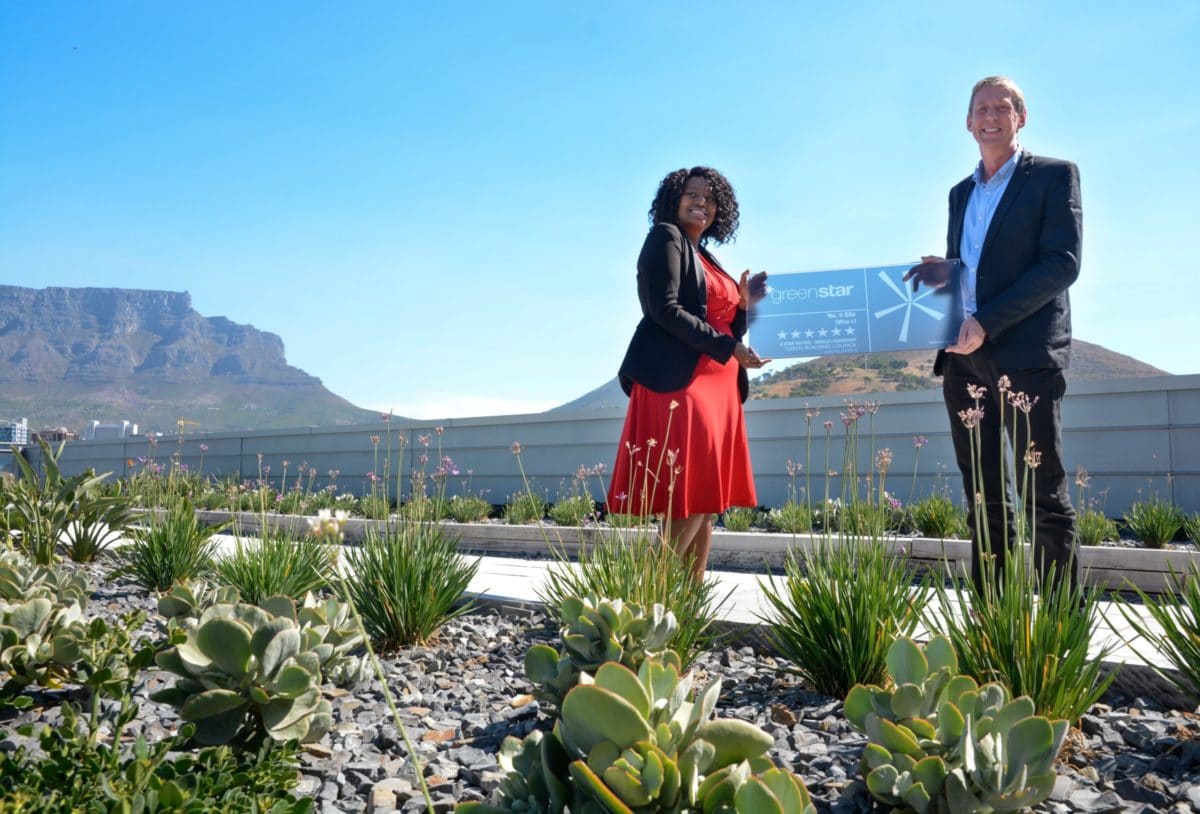
V&A Waterfront asks its tenants to guarantee they’re contributing positive activities to the development. [Photo: Courtesy of V&A Waterfront]
V&A Waterfront’s innovations in sustainable development are not going unnoticed.
No single area is more symbolic of the transformation bubbling over in the Western cape than the bustling V&A Waterfront, a mixed-use sustainable development encompassing more than 300 acres of residential and commercial buildings—from hotels and dining to leisure and entertainment. It has become one of Africa’s most popular tourist destinations, with 24 million annual visitors. It also has a storied history as the southern hemisphere’s oldest working harbor.
Being the unofficial heart of Cape Town, the Waterfront is vital to the South African economy, with some 21,000 people working within it, 1,500 residents, and as many as 180,000 visitors daily. As such, it was in a prime position to not only set an example for the rest of the region, but also make a big impact in the fight to preserve resources.
“The V&A Waterfront has long been committed to leadership in sustainability practices, with a holistic sustainability program consisting of interventions such as waste recycling, energy efficiency, traffic management, public transport, fleet management, as well as staff and tenant education and incentives,” says Donald Kau, head of communications at the V&A Waterfront. “We are also at the fore of implementing a green agenda across the property, as it is important to ensure our tenants’ activities are environmentally friendly. We’ve introduced a Green Lease Tenant Criteria Reference Manual, guaranteeing tenant activities contribute positively.”

[Photo: Courtesy of V&A Waterfront]
Although the Waterfront’s focus on sustainability predates the area’s current water and electricity problems, some of its newest projects, like the jaw-dropping Zeitz Museum of Contemporary Art Africa (Zeitz MOCAA), situated in the heart of the Waterfront’s Silo District, are among its most impressive feats of green design. Opened in September 2017, the Zeitz MOCAA is housed in a converted historical grain silo—once the tallest building in South Africa.
Kau says the biggest challenge was working out how to preserve and acknowledge the building’s history while recycling and reusing material, minimizing the carbon footprint of the project, and still giving it a new, contemporary use.
That challenge has only intensified as the Waterfront takes on six new developments surrounding the museum—commercial offices, residential buildings, the Virgin Active Health Club, and the Radisson RED hotel. “In instances where we are constructing buildings from scratch…we ensure that the latest green engineering practices are used, and that each new building will meet the [Green Building Council of South Africa]’s criteria for green-star ratings,” Kau says. But when they have to “reverse-engineer” sustainability into a property like the Zeitz MOCAA, things get a little trickier. Kau says it was a challenge they were more than happy to embark on. “In some cases, there were relatively simple things we could implement, such as changing the lighting controls and installing sensor-activated taps in bathroom basins, to reduce electricity and water consumption.”

Dorah Modise, GBCSA CEO, and David Green, V&A Waterfront CEO [Photo: Courtesy of V&A Waterfront]
Other innovations implemented within the Silo District include efficient water and electrical design to minimize the district’s demand on resources, water and energy metering systems to manage consumption, efficient use of space using light-weight internal walls to reduce wall thickness and decrease total building weight, using low-VOC finishes and natural lighting, and incorporating durable yet cost-effective building facades that could withstand the harsh harbor environment and offer thermal performance.
One of the Waterfront’s most impressive features, though, is its cooling system, which makes perfect use of its prime harbor location, drawing in cold Atlantic seawater to regulate internal building temperatures. “The seawater cooling system has been introduced to newer buildings in the Silo and Marina districts,” Kau says. “The cooling system replaces energy-hungry air conditioning. Ice-cold water from the Atlantic sea is piped throughout the building and returned into the sea. This seawater is so cold it cools the air around it, eliminating the need for air-conditioning and other cooling systems.”
The Waterfront’s innovations in green building are not going unnoticed, earning accolades from Green Building Council of South Africa (GBCSA) and others. “The property’s ongoing drive to safeguard both its historic and environmental legacy saw the V&A Waterfront receive Heritage Platinum status in July 2015,” Kau says. And the V&A Waterfront is one of only four establishments in the Western Cape to have Platinum Heritage status. It also received the Best Destination for Responsible Tourism Award at the World Travel Market in 2014. “Our buildings are an important asset at the V&A Waterfront, and we have committed to sustainable development across the property as a strategic focus point for the business.”
